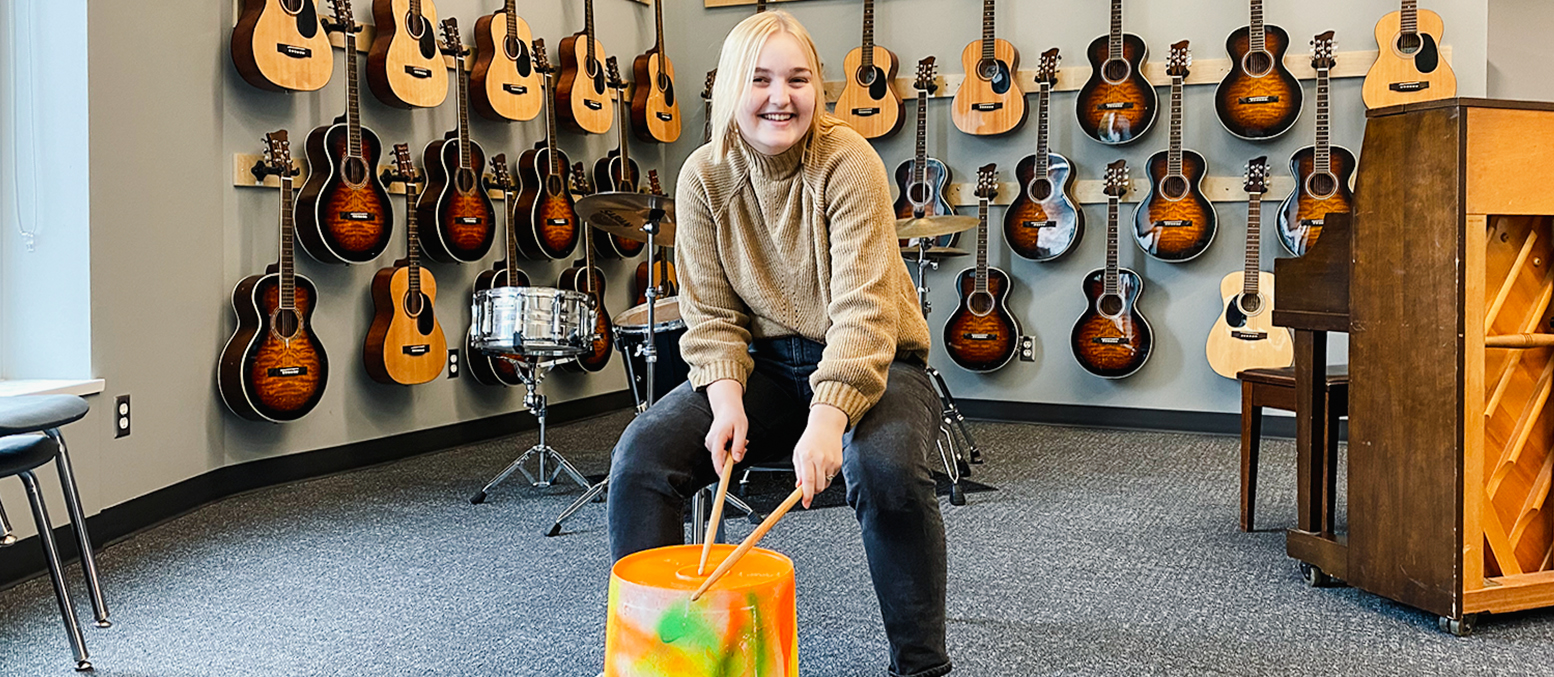You walk through the middle school hallways and hear a “thump, thump, thump.” As you turn the corner towards the grade 5 wing, the sound starts to crescendo. You begin to follow this strange noise.
Thump, clack, thumpity thump.
“Where is this sound coming from?” you wonder. Is it a jack hammer? No, too rhythmic. Is it my neighbour using the leaf blower at 6:00 am again? No, too percussive. Is it a giant walking on the roof? No, it’s more of a “thump, thump, click, clack” than a “fee-fi-fo-fum.”
You follow the sound out of curiosity, covering your ears as it only gets louder and louder. After turning some corners and weaving your way through the middle schoolers swarming the halls, you finally reach the source of the noise.
You find yourself in front of a grade 5 classroom. When you open the door and take a step, your eyes are met with a swarm of orange buckets littering the floor, wooden drumsticks bouncing up and down atop the surface of the buckets, and bright-eyed students grasping and controlling the drumsticks with focus and thrill.
The music teacher appears to be simultaneously smiling at her students while rubbing her temples.
Learning Loudly
In grade 5 music, one of our units is bucket drumming. We bring out the classic Home Depot buckets and some drumsticks and have a blast playing grooves, fills, and various rhythms.
It’s one of my favourite units to teach.
But there’s one problem: When 24 eleven-year-olds are whacking 5-gallon buckets at the same time, it gets incredibly loud.
Before the new middle school music room, I travelled from classroom to classroom teaching music in the grade 5 homeroom classes. I started the year with “quieter” instruments to try to accommodate the neighbouring classes, but when the music room was not ready as early as we first anticipated, I had no choice but to move onto the drumming unit.
So, there I was twice a week, lugging big stacks of buckets from class to class (thankfully there were always students eager to help!).
In these non-soundproofed classrooms, the drumming was even louder than it should have been. The sound of drumming could be heard from every corner of the school; I’m grateful my colleagues didn’t excommunicate me at this point!
Although it was loud, it was fun. The students were engaged and enthusiastic. The students learned about dynamics, tempo, and rhythm.
The following year, the new middle school music room was home to our bucket drumming unit. The soundproofing helped limit the spread of the noise quite a bit, which was a huge win.
However, 24 sets of wooden sticks batting against hard plastic still resulted in the drumming often drowning out the music we were trying to play along with. We took turns playing in groups, we practiced playing “pianissimo” (very soft), and some students wore noise cancelling headphones.
Yet, nothing was working quite enough.
Two of my classes were going to be performing bucket drumming at POL Night in the “echoey” gym. I needed to find a way to ensure the buckets weren’t too overpowering.
The Stuffing Test
I shared my concerns with my mom, a seasoned teacher and expert problem solver. We agreed to hit the drawing board together one evening a few days before POL Night. I brought a bucket and drumsticks along for testing purposes.
So, there we were in the kitchen at about 9:00 pm, experimenting by stuffing various items into the bucket, laying items on the top of the bucket, and testing out different materials to wrap the sticks in. After some experimentation, we invited my dad and brother, who were home at the time, to help and blindfolded them to see if they could hear a difference between a “normal” drum and our “upgraded” one.
After following the scientific method to a T, we landed on a very sophisticated technique: shoving a pillow into the bucket and wrapping some quilting stuffing around the tips of the drumsticks.
The next step was gathering 24 pillows and wrapping the sticks up.
Once I acquired enough pillows, I had some student volunteers come to the parking lot and help unload armloads of pillows squashed into the back of our car. Another set of students helped wrap pieces of stuffing around the sticks using rubber bands. Don’t you love how willing and enthusiastic kids can be to help with things like that?
Celebrate The Wins
When we tried out these modified buckets in class, there was an unanimous thrill within the classroom. The students were happy to be able to drum at a less deafening volume.
This experience is a small example of what it means to be a teacher. Sometimes, the first time I do a lesson, project, or activity, I see a lot of value in it, but also see ways I can improve it. I love bucket drumming, but it was evident there was room for improvement. It’s important to celebrate the wins while also finding ways to improve learning experiences for the next time we do them. Who knows? Perhaps this year we will discover how to make our drumming unit even better.






WHAT DO YOU THINK?
Listening to those kids play their drums at the POL night last spring was fantastic! Well done, Corinna!